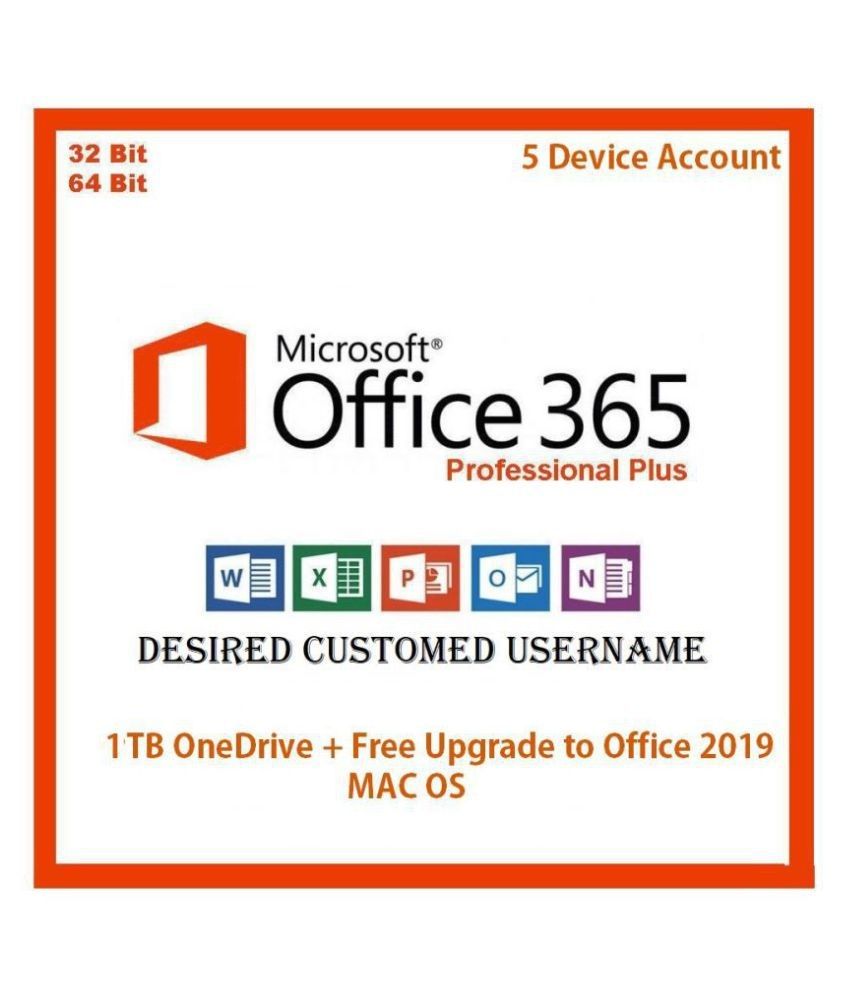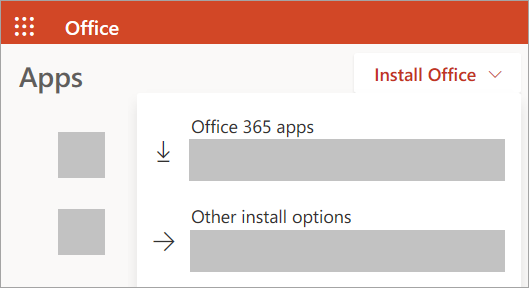Office 365 32 Bit
Microsoft Office 365 Home 32/64-bit - Subscription - 5 PC and Mac in One Household - 1 YearMicrosoft Office 365 Home 32/64-bit - Subscription - 5 PC and Mac in One Household - 1 Year - Non-commercial - English - PC, Intel-based Mac. Install the product on PC with few easy steps and experience all the features offered by this awesome product. The downloaded file contains both the 32- and 64-bit installations. Office 365 Business, Enterprise, and Educational Subscriptions. If you have an Office 365 Business or Enterprise subscription, you (or your administrator) will need to use the Office Deployment Tool to download and install Office 365 offline.
Maybe moving to 64-bit Office will be faster, but any small combined time savings could be less than the time taken uninstalling and reinstalling Office! Move to 64-bit Office. Choose the 64-bit Office option if you’re installing Office 365/2019 on a new computer or doing a full reinstall on an existing computer.
Troubleshooting - How to convert MS Office from 64-bit to 32-bit
Problem Description:
I am on Windows 64-bit and Office 365 64-bit. VB Demo works fine when I use QuickBooks Data as connection source.
If I use QRemote I get the 'Evaluation Expired. QRemote requires QODBC license.' message.
In Excel, that connection is not available only QuickBooks Data 64-bit QRemote.
Any help would be appreciated.
Solution:
You are not getting QuickBooks Data DSN in the connection window because you are using MS Office 64-bit version.
You can identify if your MS Access/MS Excel is 32-bit or 64-bit from:
MS Office 2010:
File -> Help ->
File -> Help ->

Office 2013:
File -> Account -> About Access
File -> Account -> About Excel

Office 2016/365:
File -> Account -> About Access
File -> Account -> About Excel
In About window. If you see 32-bit, then your MS Office is of 32-bit.
If you see 64-bit, then your MS Office is of 64-bit.
You can identify the application from Task Manager window also.
If the application is 32-bit, then you will notice *32 after EXE name in process tab. If you can't see *32 after EXE name that means the application is of 64-bit.
QuickBooks is a 32-bit application and we must keep QODBC a 32-bit driver to work with QuickBooks and 32-bit applications, both will run under a 64-bit OS.
Since a 64-bit application cannot talk to a 32-bit driver, we have to do a bit of magic to get the worlds to connect, we call it QRemote. QRemote works as a bridge between 64-bit Applications and the 32-bit QODBC Driver by communicating data calls between the two worlds using TCP/IP protocol.
The QBES Read Only version of QODBC will not work with 64-bit applications nor will it work with remote data sharing, that functionality was not part of our contract with Intuit and those functions are only included in the version of the driver we sell.
QODBC Read-only edition for QuickBooks Enterprise does not include QRemote License. So, after 30 days, you will not able to use QRemote.

After 30 days of evaluation, if you try to connect and using QRemote Other then QODBC Licensed you will notice 'Evaluation Expired. QRemote requires QODBC license.' message.
So, if you want to use QRemote DSN, then you need to purchase a latest QODBC license.
Please click here for purchasing QODBC license.
OR
If you load the 32-bit version of MS Office on the machine you won't have any problems using the driver that we build for Enterprise Solutions.
To install the 32-bit version of MS Office on the machine. First, you need to uninstall 64-bit version of MS Office.
Uninstallation of 64-bit MS Office:
To uninstall 64-bit version of MS Office, search 'Control Panel' from Start Menu & click 'Control Panel' from the result.
The Control Panel is opened, click 'Program and Features' for uninstalling MS Office 64-bit.
From the program list, Search for 'Microsoft Office' & click 'Uninstall'.
MS Office 2010:
Ms Office 365 Download
Office 2013:
Office 2016/365:
After, MS Office 64-bit version uninstalled you need to install the 32-bit version of MS Office.
Installation of 32-bit MS Office:

MS Office 2019 / 365:
The 64-bit version is installed by default unless Office detects you already have a 32-bit version of Office (or a stand-alone Office app such as Project or Visio) installed. In this case, the 32-bit version of Office will be installed instead.
To change from a 32-bit version to a 64-bit version or vice versa, you need to uninstall Office first (including any stand-alone Office apps you have such as Project of Visio). Once the uninstall is complete, sign in again to www.office.com and select Other install options, choose the language and version you want (64 or 32-bit), and then select Install.
Please refer to following links
MS Office 2010:
You can install 32-bit MS Office by double-click on setup.exe from MS Office 2010 setup folder.
Please make sure that MS Office folder does not contain x64 in the folder name. If x64 in the folder name, then it is the 64-bit installer. You need to use the 32-bit installer.
Office 2013:
In MS Office 2013, You need to navigate to the x86 folder & run setup.exe from MS Office 2013 setup folder.
If you run setup.exe from the main folder, then it will install 64-bit MS Office.
Office 2016/365:
In MS Office 2016/365, You need to navigate to Office folder & run Setup32.exe from MS Office 2016/365 setup folder.
If you run Setup.exe from the main folder, then it will install 64-bit MS Office.
FINAL UPDATE: AUGUST 23, 2019.

Choose the bit-version that's best for you, but be careful about thinking one is always better than the other. If this doesn't make sense, then please read-on...
UPDATE: MARCH 5, 2019.
Microsoft flipped the switch right back. 'The 32-bit version of Office is automatically installed unless you explicitly select the 64-bit version before beginning the installation process.' Again, we'll reiterate 32-bit Office is more seasoned than 64-bit Office. Link.
UPDATE: MARCH 1, 2019.
Microsoft recently/quietly flipped the switch. 'The 64-bit version of Office is automatically installed unless you explicitly select the 32-bit version before beginning the installation process.' Be that as it may, the other content herein remains valid. We've enhanced our software to support 64-bit Office editions, but we still recommend 32-bit Office for multiple reasons. 32-bit Office is unquestionably more broadly-compatible and more seasoned (and thus, less buggy) than 64-bit Office.
POSTED: JANUARY 21, 2019.
It is not uncommon to be puzzled by the differences and tradeoffs between 32-bit and 64-bit Office. We hope this page helps to lessen potential confusion and to rationalize the best-bit Office for you. Oh, and Office 2019 has an interesting twist in a world seemingly going cloud and perpetually changing.
Microsoft Windows permits one XX-bit Office to be installed at one moment in time on one computer. Either-bit Office may be installed on 64-bit Windows. They behave similarly, but 32-bit Office and 64-bit Office are literally different computer programs by appearance and under the hood.
Here are pertinent characteristics:
64-bit Office can use more virtual address space ('memory') if needed, than can 32-bit Office.
64-bit Office and Office apps do not automatically run faster or slower than on 32-bit Office but slightly speed-wise they can differ. Multiple factors and dependencies are at play. Memory packet sizes (in bits...often among megabytes) change, memory needs for functions/subs/objects change, and Windows processing itself differs, but raw 'memory speed' doesn't change.
64-bit Office is not an upgrade to the 32-bit edition of the same version.
Except for .accde, Office app file formats (.xlsx, .docx, .accdb, .mdb, ...) are compatible with either-bit Office.
Office 2019, 365, 2016, 2013, and 2010 are available in 32-bit and 64-bit editions.
32-bit Office is the Default install for all Office versions that support a 64-bit edition.
Max memory use for a 32-bit Office app may be 2 gigabytes (GB), including the space needed by the app, any running add-ins, and the document file(s) being accessed. There are exceptions when running modern 32-bit Office on 64-bit Windows and when considering file size limitations in general:
32-bit Outlook .pst/.ost files are not limited to 2 GB. They are default limited to 50 GB according to Microsoft, and the limit can be increased or decreased.
32-bit Excel files are not limited to 2 GB. They are limited to 4 GB, according to Microsoft.
Whether running 64-bit Access or 32-bit Access, accdb and mdb database files are limited to 2 GB, according to Microsoft. Database design can somewhat work-around the 2 GB limit by linking to tables in other Access databases because each single table (of potentially dozens, hundreds, ...) can effectively push the 2 GB limit.
Whether running 64-bit Word or 32-bit Word, the maximum file size is limited to 32 MB for the total document text only. If the file contains graphics, the maximum file size can be larger than 32 MB, according to Microsoft.
Typically, 2 gigabytes (GB), which is 2048 megabytes (MB), is not a restrictive file size.
Starting in the 1990s Microsoft Windows operating system evolved from 16-bit (Windows 3.x / Windows 95) to 32-bit (Windows NT 3.1), and then later to 64-bit...for some with Windows XP but for most with Vista or Windows 7. Each new bit step permitted Windows to access and use more memory to manage running apps. Another step-up to 128-bit may not occur in our lifetimes.
Windows and Office are fully integrated. Each Office app has capabilities to extend its core functions. Sometimes called Add-ins, Macros, Controls, Automation Servers, Objects, or References (hereinafter, simply 'Tools'), each Office app can use a plethora of Microsoft and 3rd-party Tools to perform tasks.
As an external resource file, a Tool might be in the file form of .ocx, .dll, .exe, .xlam, .xla, .xll, or others, and multiple Tools (when bit-compatible) can be used by multiple Office apps in multiple Office app files.
Usually, a single 3rd-party Tool file is compatible with either 32-bit Office or 64-bit Office, but not both. For most 3rd-party Tools to work with both-bit Office, they must be developed and exist in two different bit version files (like Office). Furthermore:
There are more than 1000 free and commercial 32-bit Office Tools.
There are fewer 64-bit Office Tools, and nearly all such Tools exist in a 32-bit edition.
Most Tools are unhindered by a 2 GB memory limit to function for their purpose. As a result, the time to produce 64-bit editions are not necessarily pursued first, if at all. XX-bit Office isn't seamlessly 'backwards/forwards compatible' with respect to 3rd-party Tools.
Office 365 32-bit Versus 64-bit
After three+ decades of development it appears that ever-expanding Office functionality is sunsetting. Microsoft Office 2019 is a PERPETUAL LICENSE version of Office and is available in 32-bit and 64-bit editions. That's right...a static, non-expiring, more-private, cloud-free, licensed version of Office is back from yesteryear 199X.
Whether you're on a remote drilling rig or performing any mission critical operation, reducing the potential for computer problems has value and a stable Office is less likely prone to glitches. Going forward, a fixed version of Office should be considered an option in the mix.
And as mentioned above, 32-bit is the Default Office edition install...
Their are potential tradeoffs between 64-bit and 32-bit Office. However, one is not necessarily better-at-all-things than the other by virtue of its existence.
The potential limitation of 64-bit Office is compatibility with a universe of resources.
The potential limitation of 32-bit Office is the inability to process atypically large files.
Microsoft licensing usually makes it easy to switch to the other-bit Office at any time.
Entities that prefer both-bit Office availability sometimes do so with Windows and either-bit Office running on a virtual machine server.
Microsoft Office 64 Bit
Here's the link to the above snip.
